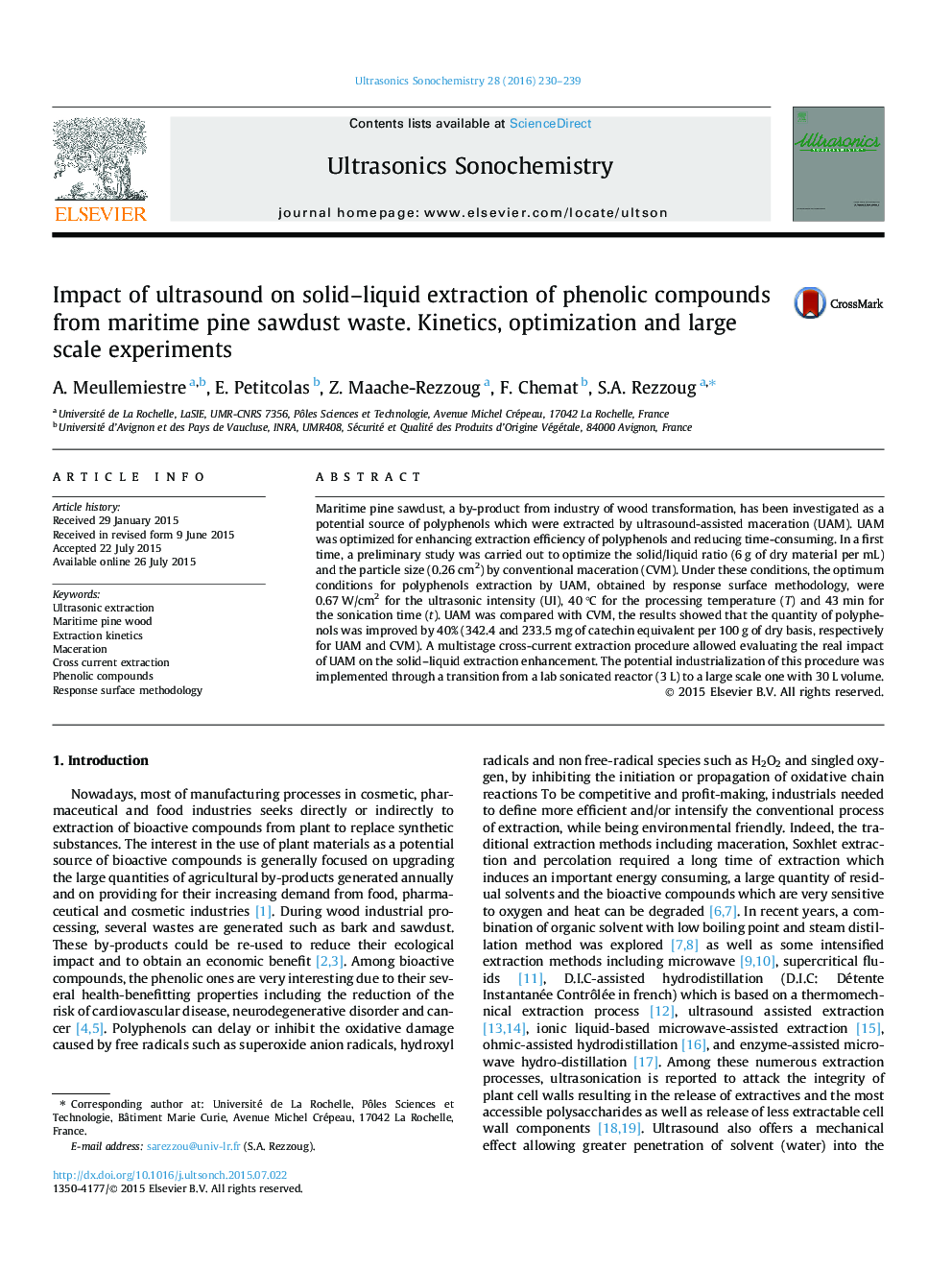| Article ID | Journal | Published Year | Pages | File Type |
|---|---|---|---|---|
| 1266560 | Ultrasonics Sonochemistry | 2016 | 10 Pages |
•Ultrasound was used to extract phenolics from maritime pine sawdust waste.•Effect of ultrasonic intensity, temperature and sonication time were studied.•Polyphenols release was optimized by response surface methodology.•The results obtained at a lab scale were validated at a pilot plant scale.•Ultrasound emerges as an efficient alternative to conventional procedure.
Maritime pine sawdust, a by-product from industry of wood transformation, has been investigated as a potential source of polyphenols which were extracted by ultrasound-assisted maceration (UAM). UAM was optimized for enhancing extraction efficiency of polyphenols and reducing time-consuming. In a first time, a preliminary study was carried out to optimize the solid/liquid ratio (6 g of dry material per mL) and the particle size (0.26 cm2) by conventional maceration (CVM). Under these conditions, the optimum conditions for polyphenols extraction by UAM, obtained by response surface methodology, were 0.67 W/cm2 for the ultrasonic intensity (UI), 40 °C for the processing temperature (T) and 43 min for the sonication time (t). UAM was compared with CVM, the results showed that the quantity of polyphenols was improved by 40% (342.4 and 233.5 mg of catechin equivalent per 100 g of dry basis, respectively for UAM and CVM). A multistage cross-current extraction procedure allowed evaluating the real impact of UAM on the solid–liquid extraction enhancement. The potential industrialization of this procedure was implemented through a transition from a lab sonicated reactor (3 L) to a large scale one with 30 L volume.
Graphical abstractFigure optionsDownload full-size imageDownload as PowerPoint slide
